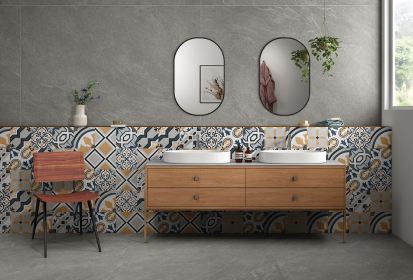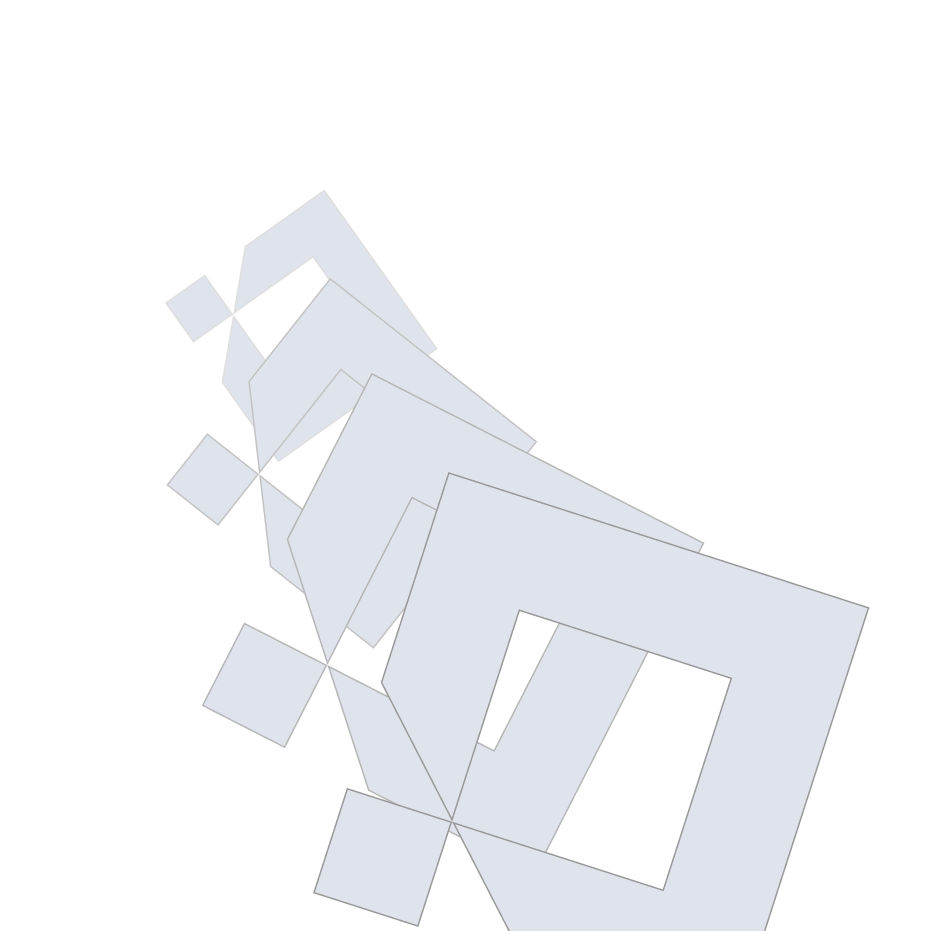
How Digital Printing is Revolutionizing Ceramic Tile Designs
Introduction
The ceramic tile industry is undergoing a fundamental transformation through the adoption of digital printing technology. This innovative manufacturing process represents a significant departure from conventional screen printing methods, offering unparalleled precision, efficiency, and creative freedom.
For industry leaders like EDDICA CERAMIC, digital ceramic printing has become a cornerstone of modern tile production. The technology's ability to reproduce intricate designs with exceptional accuracy while maintaining cost-effectiveness has made it indispensable for both large-scale commercial projects and bespoke residential applications.
1. Technical Advancements in Digital Ceramic Printing
Digital ceramic printing operates through a sophisticated inkjet system that deposits specialized ceramic inks onto tile surfaces with microscopic precision. The process begins with digital design files that are translated into printing instructions, allowing for exact replication of complex patterns without the need for physical stencils or screens.
The resolution capabilities of modern digital printers, reaching up to 1200 dpi, enable the reproduction of photorealistic textures that were previously unattainable through traditional methods. This high-fidelity output is achieved through advanced print head technology that controls ink droplet placement with sub-millimeter accuracy.
2. Unprecedented Design Flexibility and Customization
The design possibilities enabled by digital ceramic printing extend far beyond the limitations of analog techniques. Architects and designers now have access to an extensive library of realistic material simulations, including authentic stone veining, wood grain patterns, and metallic finishes that are visually indistinguishable from their natural counterparts.
Customization reaches new levels with digital technology, allowing for personalized designs at competitive price points. Residential clients can incorporate unique artwork or photography into their tile selections, while commercial projects benefit from branded elements integrated directly into flooring and wall surfaces. The technology also supports variable data printing, enabling each tile in a series to feature slight variations that enhance natural aesthetics.
3. Enhanced Performance Characteristics
The performance benefits of digitally printed ceramic tiles stem from both the printing process itself and subsequent finishing treatments. The precision of digital ink application creates surfaces with optimized porosity, contributing to improved stain resistance and easier maintenance. Advanced nano-coating technologies can be applied to enhance these properties further, creating surfaces that resist scratching, chemical exposure, and bacterial growth.
Thermal stability represents another critical advantage, with digitally printed tiles demonstrating exceptional resistance to temperature fluctuations. This makes them suitable for exterior applications where freeze-thaw cycling would compromise lesser materials. The technology also allows for the creation of specialized tiles with enhanced slip resistance or light-reflective properties for specific architectural requirements.
4. Sustainable Manufacturing Advantages
Digital ceramic printing aligns with contemporary sustainability goals through multiple aspects of its production process. The precision of digital ink deposition results in near-zero ink waste, contrasting sharply with traditional methods where excess ink and cleaning solutions represent significant waste streams. Energy efficiency is improved through reduced kiln firing times and the elimination of energy-intensive screen production processes.
From a lifecycle perspective, digitally printed ceramic tiles maintain all the recyclability benefits of traditional ceramic products. At end-of-life, tiles can be crushed and reintroduced into the manufacturing process or repurposed as aggregate material, contributing to circular economy principles in the construction industry.
5. Future Developments and Industry Outlook
The evolution of digital ceramic printing continues at a rapid pace, with several emerging technologies poised to further transform the industry. Three-dimensional printing capabilities are being integrated with digital decoration systems, allowing for the creation of tiles with both visual and tactile texture variations. Smart tile concepts incorporating embedded sensors or responsive surface treatments represent another frontier in development.
Industry forecasts predict continued strong growth in digital ceramic printing adoption, with market analysts projecting a compound annual growth rate exceeding 12% through 2030. This growth will be driven by increasing demand for customization, ongoing technical improvements in print quality and speed, and the technology's inherent sustainability advantages.
Conclusion: Redefining Ceramic Tile Manufacturing
Digital ceramic printing has fundamentally redefined what is possible in tile design and manufacturing. By combining unparalleled creative freedom with technical precision and sustainable production methods, this technology has established itself as the new standard for quality-conscious manufacturers like EDDICA CERAMIC.
For industry professionals seeking to specify the most advanced tile solutions:
Discover how EDDICA CERAMIC's digital printing capabilities can elevate your next project. Contact our technical team for consultation and samples.
